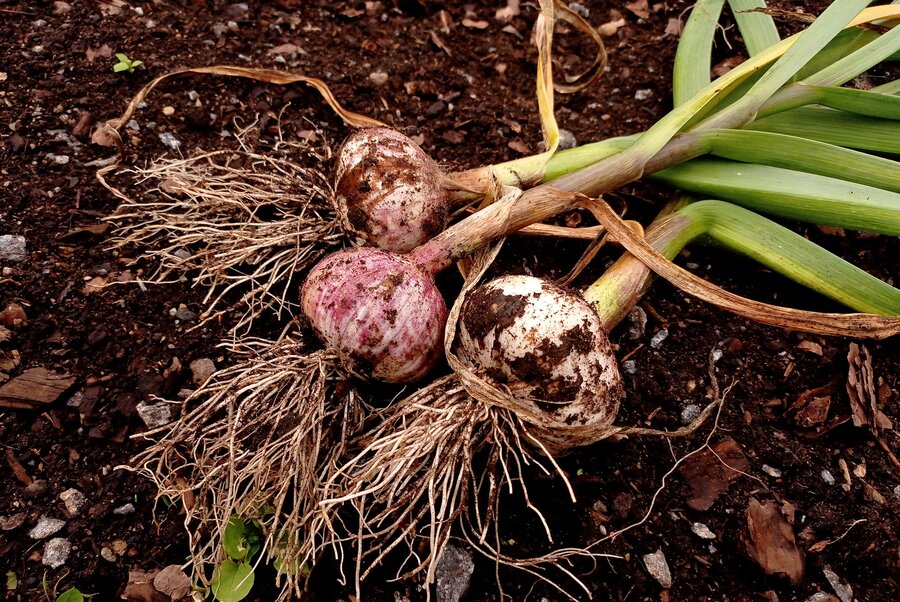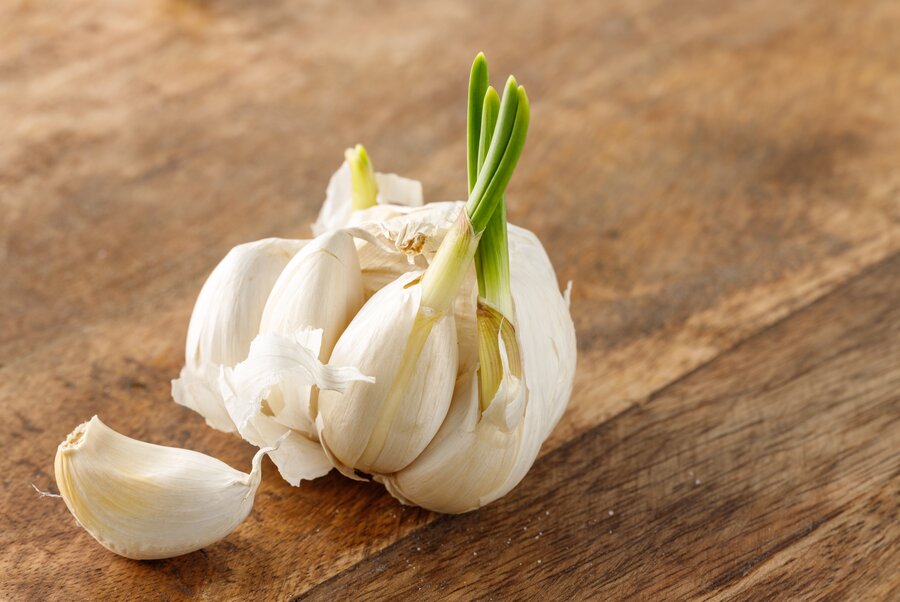Written by Spirekassen 03 Aug 2023 15:44
Grow garlic in the greenhouse
If you haven't tried growing garlic before, you should consider growing them in the greenhouse. Normally, garlic is cultivated outside in the kitchen garden, but it is easy and manageable to grow them in the greenhouse as well. The advantage is that you get an earlier harvest and, based on our experience, a better yield.
Garlic (Allium sativum) belongs to the onion family and is related to our other edible onions. In fact, garlic is also related to wild garlic, leeks, chives, and the beautiful Mediterranean ornamental onions. All Allium species belong to one large botanical group called monocots. Monocots develop only one embryonic leaf when the plant emerges from the ground, unlike, for example, tomato plants, which develop two.
Garlic originally comes from Central Asia but has also been cultivated in the Middle East and is one of the oldest known cultivated plants. Today, garlic is grown in many places around the world. Garlic contains the sulfur-containing compound allicin. When garlic is chopped or crushed, alliin is converted into allicin and several other sulfur compounds. Allicin is an antibiotic that works against both bacteria and fungi.
Buying garlic bulbs (cloves):
It's a good idea to buy certified garlic bulbs (cloves) for growing your own garlic. There is a clear distinction between garlic types, and it is important to know the differences as they have various characteristics. Additionally, certified garlic bulbs are free from diseases and specifically produced for hobby cultivation.
|
Softneck garlic (Allium sativum var. sativum) Available in supermarkets. Often many cloves in one bulb. The stem is soft and can be braided. Reasonably hardy and very durable. |
Hardneck garlic (Allium sativum var. ophioscorodon) Cannot be grown in hot climate zones. Thin skin that easily peels off if harvested too late. The skin often has violet streaks. Fewer and larger cloves. The stem is hard. |
When should I plant garlic?
You should plant garlic in the greenhouse between September and November. If you plant garlic outside this period, you shouldn't expect it to develop normally and produce cloves during growth. Of course, there are exceptions. Some garlic varieties are developed for spring cultivation, to be planted in the ground early in the spring. Our experiences with these varieties are not very convincing.
Planting garlic
Garlic does not thrive in overly moist soil. Ensure a well-drained spot in the greenhouse. For example, plant them in raised beds or in a large pot with drainage holes. The soil should be rich in calcium.
Each individual clove should be planted separately in the soil. Winter cold and frost are crucial for garlic's natural development. The cold stimulates garlic growth and initiates the formation of new cloves, as you see when you buy whole garlic bulbs at the supermarket. The severity of the winter does not matter much because garlic is very robust.
How to do it
- Plant each clove at a depth of 5–10 cm.
- The pointed end should face upward and the rounded end downward.
- There should be about 15 cm of space between each clove.
- Keep the soil moist but not wet throughout the winter.
Harvesting garlic
The matured garlic is harvested the following year from June/July. You can expect an earlier harvest in the greenhouse than outside in the kitchen garden. The specific harvesting time depends on the garlic variety you are growing. Garlic is ready for harvest when the top leaves become soft and start to wither. Carefully dig or pull the garlic bulbs from the soil.
If the soil is dry, and there is no rain in sight, you can let the garlic bulbs dry on the ground under the summer sun. This drying method helps prevent certain fungal diseases. If the period is rainy, you can loosely tie the garlic bulbs together and hang them under a shelter, ensuring good ventilation and a dry environment.
Tips for garlic breath
Chew on parsley, basil, mint, or thyme to get rid of garlic breath. Another trick is to use dental floss. Food residue with garlic, which is stuck between the teeth, naturally causes the breath to smell for a longer time.



